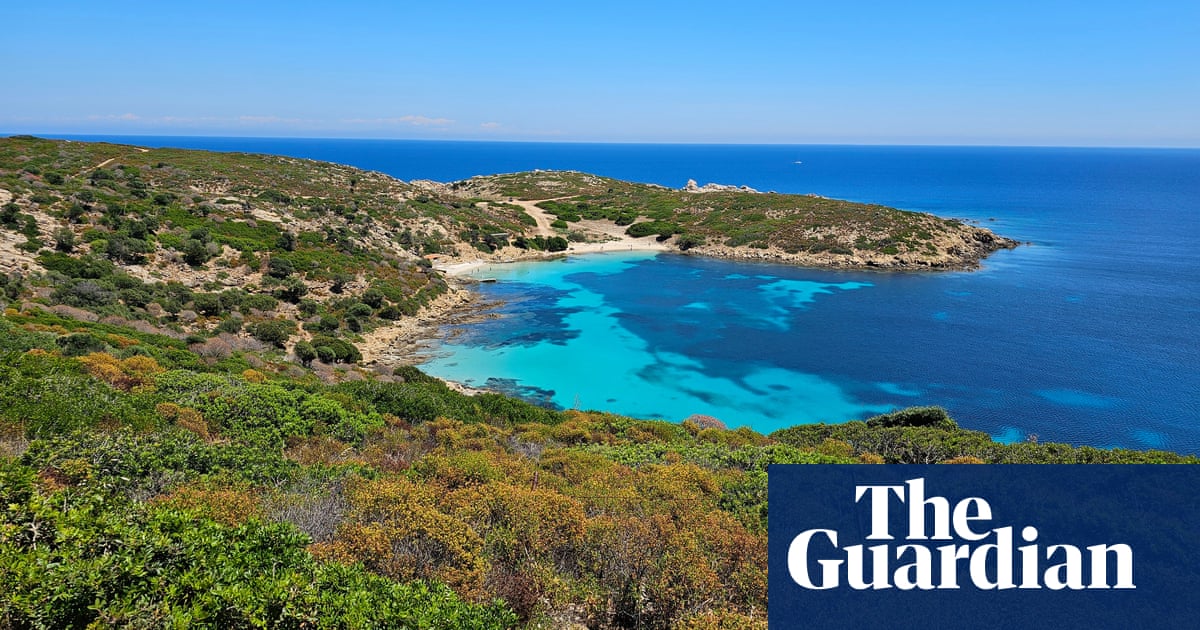People rave about La Pelosa beach in Sardinia’s north-west: it has “stunning white sand”, “clear turquoise water”, “breathtaking beauty” and is one of Lonely Planet’s best beaches in Italy. But please don’t go there. Even a decade ago when I was first checking out Sardinia’s glorious coast, crowds and costly parking at La Pelosa put me off. Now a private beach, it is a sad victim of its own success and a million social media posts. Would-be beachgoers hunch over their phones at 8am when online sales open, hoping to bag a ticket (€3.50pp, parking extra, 1,500 available).
They have to arrive armed with straw mats or microfibre towels: until terry towels were banned in 2019, each sunseeker would carry away up to 100g of that white sand, and the beach was visibly shrinking, leaving even less room for sunbathers to fight over. (The shallow, warm water attracts young families, but parents report attendants banning sandcastles because digging damages the now-fragile beach.)
What’s truly stunning about all this is that north-west Sardinia has dozens of lovely beaches, most of them not only free but relatively crowd-free. Close to Alghero, the beaches of Lazzaretto and Le Bombarde offer soft sand, a bar and a small sunbed concession, and are accessible by bus, cycle track or (longish) walk from welcoming Hotel Punta Negra (doubles from €130), which has a big pool and its own small beach.
Wilder Porto Ferro, about 10 miles north, has well over a mile of west-facing amber sands perfect for a sunset swim and picnic. And even the Stintino peninsula, with La Pelosa at its tip, has a wealth of preferable bathing spots – Le Saline on the east side, say, for acres of white sand, or Coscia di Donna (lady’s thigh), a cute rocky cove on the west.
Stintino town is pleasantly unpretentious, but the main reason to go is to leave it again – on a boat to coastal Sardinia’s wildest destination, the mountainous “donkey” island of Asinara, 10 miles long and just a few hundred metres wide in parts. A prison island until 1997, it is now a national park and marine reserve, with one permanent inhabitant – guard turned sculptor Enrico Mereu.
With one ferry a day from Stintino and three from Porto Torres further south, there is little chance of Asinara feeling busy, and…
Click Here to Read the Full Original Article at Travel | The Guardian…
